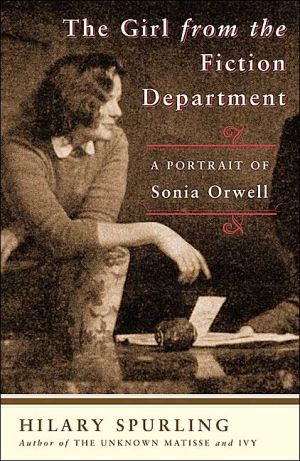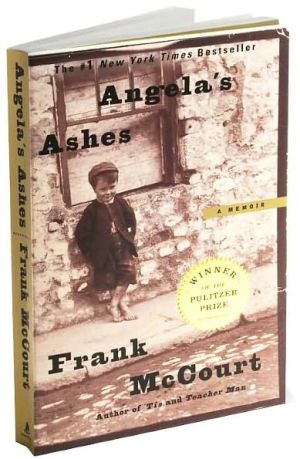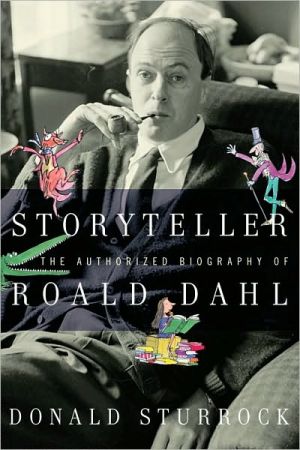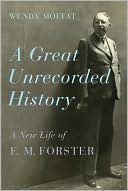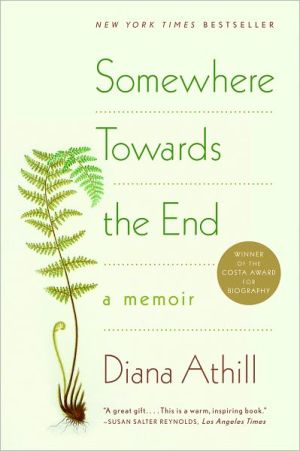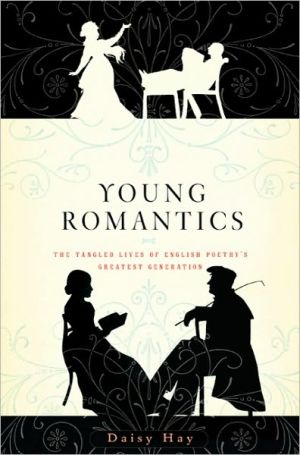The Girl from the Fiction Department: A Portrait of Sonia Orwell
"Praising The Girl from the Fiction Department is easy. The hard part is figuring out what to praise first." —Washington Post Book World\ The portrait of George Orwell's second wife drawn by his biographers is a travesty. Determined to set the record straight, her friend Hilary Spurling, herself an acclaimed biographer, reveals the whole story of Sonia Orwell's sad and splendid life.\ Beautiful, intelligent, and idealistic, but also, as she grew older, belligerent and intimidating, Sonia was...
Search in google:
Sonia Orwell was the second wife of writer George Orwell. Spurling, a prize-winning biographer and a friend of Sonia's, details Sonia's early career as an assistant at England's influential literary magazine Horizon in the 1940s and looks into her friendships with important literary figures of the day including W. H. Auden and Frances Bacon. The biography delves deeply into Sonia's marriage to Orwell and her financial problems upon his death. B&w personal photos are included. There is no subject index. Annotation ©2003 Book News, Inc., Portland, OR Spectator Spurling is widely considered to be among the most gifted biographers of her generation...[ The Girl From the Fiction Department] is timely and apt. It's an excellent read too.
\ SpectatorSpurling is widely considered to be among the most gifted biographers of her generation...[ The Girl From the Fiction Department] is timely and apt. It's an excellent read too.\ \ \ \ \ The New York TimesIn the gentlest of resurrections, Sonia Orwell comes off as a desperate heroine cooked up by Jean Rhys and Edith Wharton on a rainy afternoon. If she fails to rise to the green velvet heights that Spurling sets for her, she remains formidable, more than a tad tortured, a woman of fierce devotions and equally fierce aversions, no less interesting for being, as one friend noted, ''unspeakably unhappy.'' She paid dearly for what she loved most, which is one definition of nobility. On all counts, the best epitaph for her may be that uttered by a Marguerite Duras character, closely modeled on Sonia: ''Literature can be as fatal as anything else; you can't get over it.'' — Stacy Schiff\ \ \ The Washington PostPraising The Girl from the Fiction Department is easy. The hard part is figuring out what to praise first about this concise biography of the vivacious woman who married the author of 1984 on his deathbed, yet who was far more than just the Widow Orwell. — Michael Dirda\ \ \ \ \ Publishers WeeklySonia Brownell (1918-1980) married George Orwell in 1949 because he said it would help him recover his health. Unfortunately, the marriage proved no panacea for tuberculosis, and 14 weeks after the wedding, he died, leaving Sonia, a talented editor associated with the magazine Horizon, as his sole heir. She also inherited his pseudonym (which she continued to use as her surname till the end of her life), and, in time, assumed the role of the ferocious Widow Orwell, jealous guardian of her husband's literary reputation. Her battles with upstart biographers and established publishers, her vicious tongue and her propensity for drink led to her being vilified as a grasping opportunist. Mary McCarthy used the occasion of Sonia's memorial service to summarize her weakest points, notes Spurling, and David Plante anatomized her in Difficult Women. Now her good friend Spurling, a highly regarded biographer, seeks to set the record straight with a portrait that emphasizes Sonia's vitality, generosity, kindness and support of writers like Jean Rhys, who were much in need of it. Though Spurling treads lightly over the more intimate aspects of Sonia's life and two marriages, she does remind readers that Sonia was more than just Orwell's relict; she was closely involved in the lives and careers of many of the most influential British, French and American artists and writers of the mid-20th century. Spurling's brief, warm biography appears a touching act of friendship; if she perhaps overstates the case for Sonia, she makes clear that Sonia's critics have exaggerated the case against her. B&w photos. (June) Copyright 2003 Reed Business Information.\ \ \ \ \ Library JournalAward-winning biographer Spurling (Ivy: The Life of Ivy Compton-Burnett) takes a decidedly personal approach to the subject of her latest work. As she clearly states, her goal is to counter the negative view of Sonia Orwell that emerged from previous biographies of her and her second husband, George Orwell. (Sonia was the model for Julia, the heroine of Orwell's 1984.) Spurling tackles her subject not as an impartial biographer but as a friend attempting to "disentangle the truth." This personal angle allows her to present a narrative that reads more like a memoir than a researched account. The loose style of referencing and use of interviews with mutual associates adds to the amicable tone of the writing. In the end, Spurling succeeds in giving the reader a complete picture of her subject: a dual Sonia emerges from these pages, at once villain and heroine; her stark realism and romantic vulnerability contradict each other and create a complicated portrait. Since Sonia Orwell is a minor figure of the mid-20th-century British literary world, this work is not an essential purchase, but owing to Spurling's strong writing skills it does make a nice addition to academic libraries.-Paolina Taglienti, New York Copyright 2003 Reed Business Information.\ \ \ \ \ Kirkus ReviewsA fond remembrance of an alluring young editor who married the dying author of Animal Farm and steadfastly administered his literary affairs thereafter, earning the enmity of some Orwell partisans. Spurling (La Grand Thérèse, 2000, etc.) met Sonia Brownell (1918-80) in 1970 and was quickly taken with the mercurial, intelligent woman whose vagaries occasionally mystified even her friends and supporters. In her preface, Spurling declares her purpose: to restore Sonia’s reputation, to fracture "the myth of the cold and grasping Widow Orwell," and to humanize someone the author believes has been unfairly maligned. Sonia was born to English parents in India. But her father died (a possible suicide) when she was only four months old, and so the mother returned to England and employed whatever means she could to protect and raise her two daughters. Sonia was bright—especially adept at languages—and went to Switzerland to study French in 1935. A horrible boating accident on Lake Geneva killed a friend; this episode, says Spurling, permanently affected Sonia. The author periodically composes paeans to Sonia’s beauty (sometimes excessively so), but there is no doubt that she magnetized men. (She apparently attracted an entire London school of artists near her flat.) Involved for years with Horizon magazine, Sonia was by most accounts a spectacular employee: assiduous, charming, creative, informed. (Some male writers, however, lost their fondness for her when they received her crisp, professional rejection notices.) Spurling reveals that Sonia is the model for the luscious Julia in Orwell’s Nineteen Eighty-Four, the novel he finished shortly before he died of TB in 1950. Indeed, the dyingnovelist trusted Sonia so profoundly that he made her his sole heir. She protected his legacy sternly and co-edited the well-received four-volume Collected Essays, Journalism and Letters (1968). She married badly another time but was the trusted friend of Ivy Compton-Burnett, Jean Rhys, Mary McCarthy, and many other luminaries. A convincing and affecting corrective: an act of admiration, and love. (49 b&w illustrations)\ \
